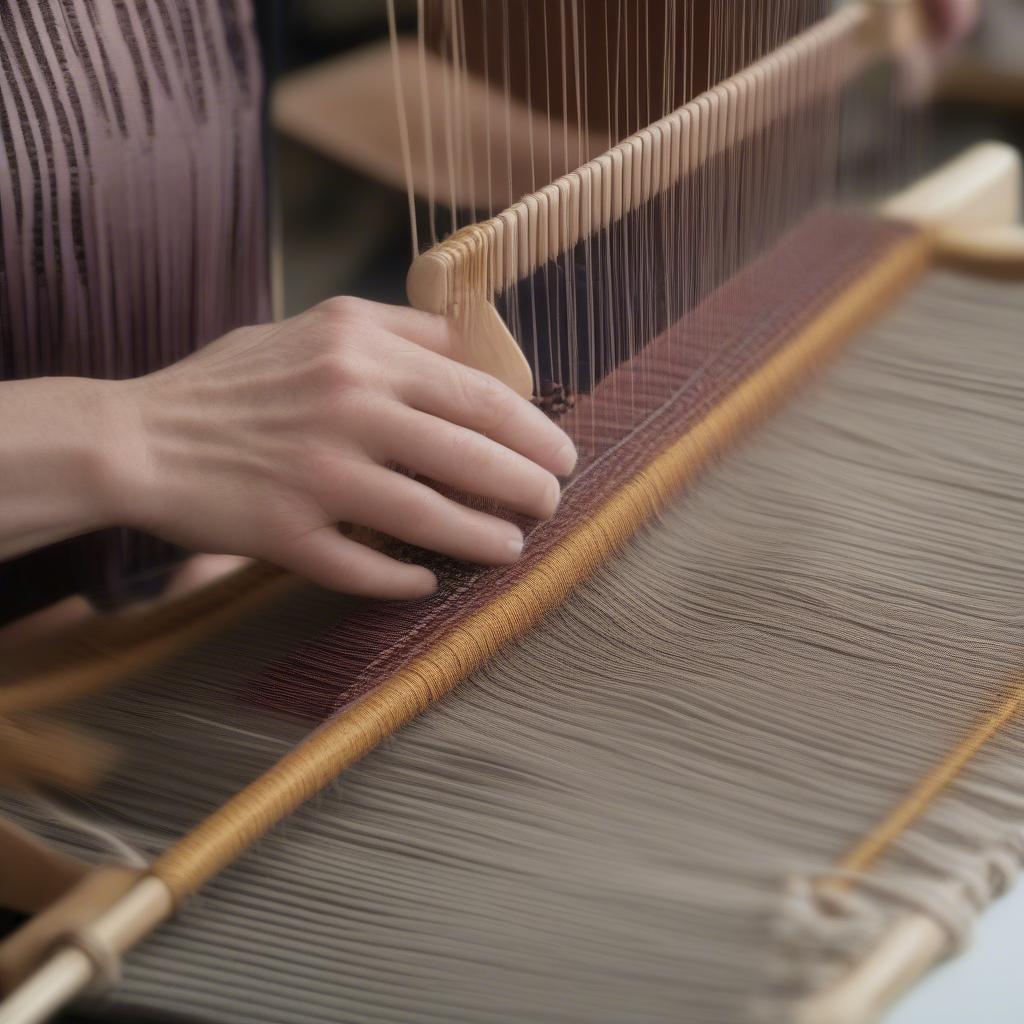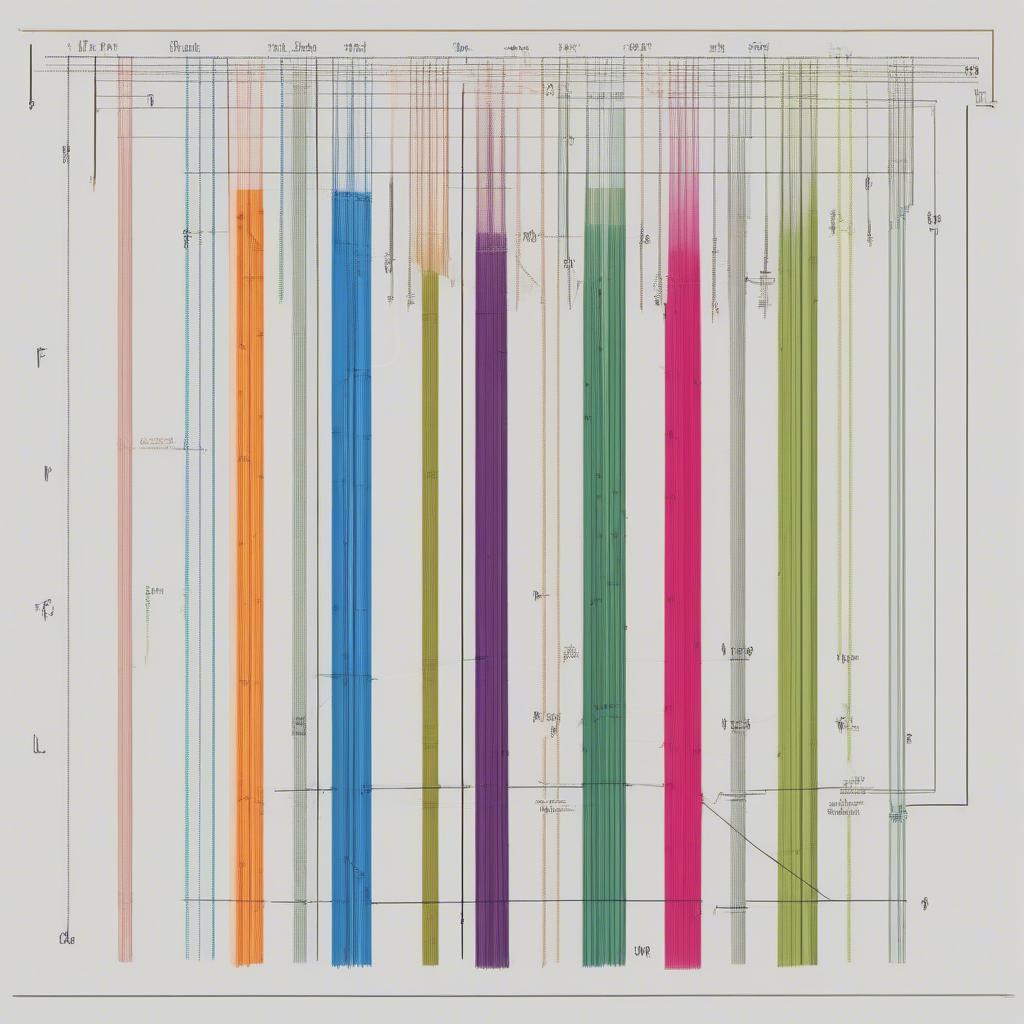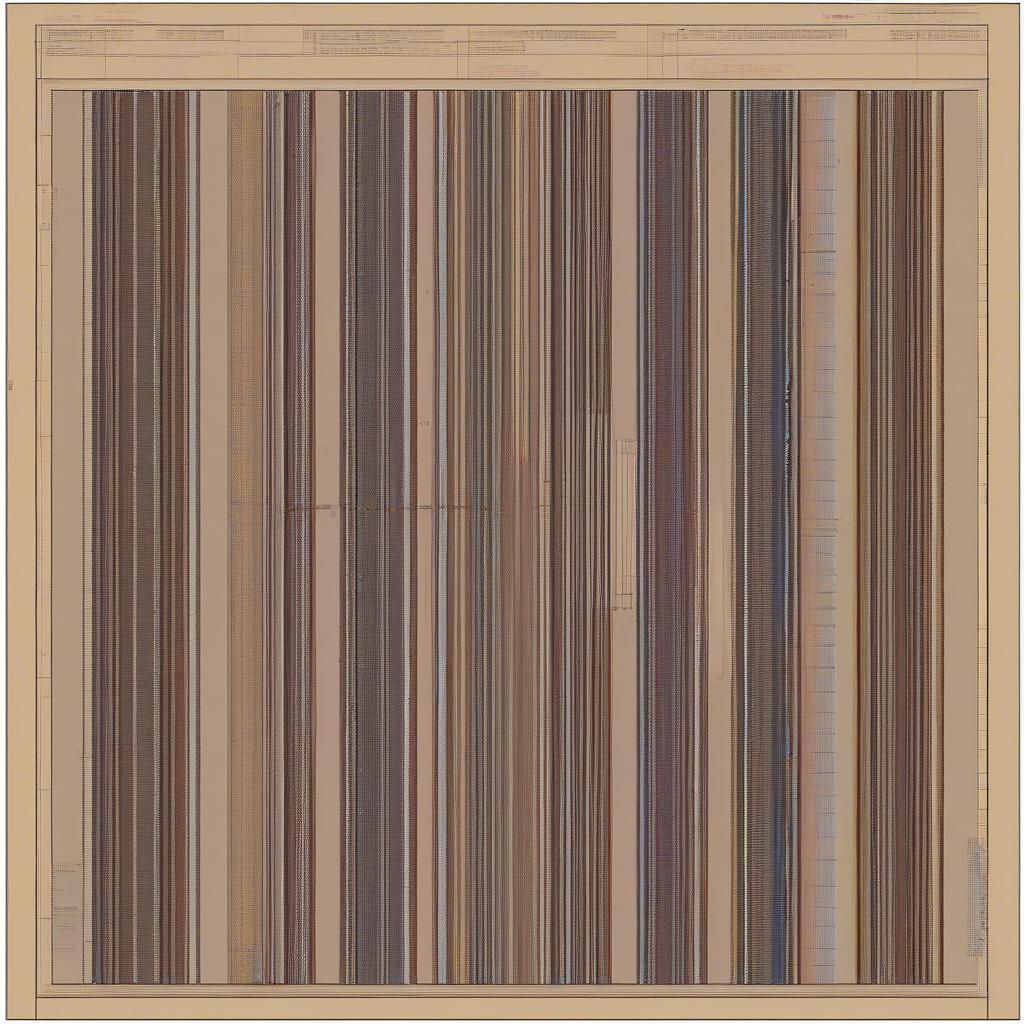Weave Table
How to Read Weaving Drafts Table Loom
Understanding how to read weaving drafts for a table loom is fundamental to bringing your textile visions to life. This comprehensive guide will unravel the mysteries of weaving drafts, empowering you to confidently tackle complex patterns and explore the creative potential of your table loom. Whether you’re a beginner just starting out or an experienced weaver looking to refine your skills, learning to interpret these diagrams is key to unlocking a world of weaving possibilities.
Decoding the Weaving Draft: A Step-by-Step Guide
A weaving draft acts as a roadmap for your weaving project. It’s a visual representation of the interlacement of warp and weft threads, dictating the pattern, structure, and final appearance of your woven piece. Learning to decipher this code opens doors to a vast library of weaving designs, from simple twills to intricate brocades.
 Reading a Weaving Draft on a Table Loom
Reading a Weaving Draft on a Table Loom
-
Understanding the Grid: The weaving draft is typically presented as a grid. The vertical columns represent the warp threads (the threads that run lengthwise on the loom), and the horizontal rows represent the weft threads (the threads that are passed across the warp).
-
Shafts and Harness: Each square on the grid corresponds to a specific intersection of warp and weft. A filled square indicates that the warp thread is raised by a particular shaft or harness on the loom, allowing the weft thread to pass underneath. An empty square means the warp thread is lowered, and the weft thread will pass over it.
-
Threading Draft: This section of the draft shows how the warp threads are threaded through the heddles on each shaft. The sequence in which the threads are threaded determines the basic structure of the weave.
 Threading Draft for a Table Loom
Threading Draft for a Table Loom
-
Tie-Up Draft: This section shows how the shafts are connected to the treadles (foot pedals) on the loom. This connection determines which shafts are raised and lowered when each treadle is pressed.
-
Treadling Draft: This section indicates the sequence in which the treadles are pressed. This sequence, combined with the threading and tie-up, creates the woven pattern.
Common Symbols in Weaving Drafts
While the basic grid structure remains consistent, there are some variations in the symbols used in weaving drafts. weaving table loom owners often use simplified drafts. Becoming familiar with these common symbols will make reading any weaving draft easier:
- Black Square: Warp thread is raised.
- White Square: Warp thread is lowered.
- Numbers: Represent shafts or harnesses.
- X or Dot: Indicates a tie-up connection.
Mastering the 4-Shaft Table Loom Draft
4 shaft weaving table loom drafts are a great starting point for exploring more complex weaving. These looms offer a balance of simplicity and versatility, allowing you to create a wide range of patterns. Understanding how to read a 4 shaft table weaving pattern draft opens up a world of design possibilities.
 Example of a 4-Shaft Table Loom Draft
Example of a 4-Shaft Table Loom Draft
“A clearly labeled draft is essential for successful weaving,” says renowned textile artist, Amelia Weaver. “Don’t be afraid to annotate your drafts with notes and reminders – this can be invaluable when revisiting a project later on.”
Troubleshooting Common Draft Reading Challenges
Sometimes, even with a clear understanding of the basics, reading weaving drafts can present challenges. Here are some tips for troubleshooting common issues:
- Double-check your threading: Ensure your warp threads are correctly threaded through the heddles according to the threading draft. A single misplaced thread can significantly alter the pattern.
- Verify your tie-up: Make sure your shafts are correctly tied to the treadles as indicated in the tie-up draft.
- Treadle carefully: Press the treadles in the correct sequence according to the treadling draft. A missed or incorrect treadle press can disrupt the pattern.
Weaving Table Runner Patterns: A Practical Application
Once you’re comfortable reading weaving drafts, you can explore a variety of projects, such as weaving beautiful table runners. weaving table runner pattern can provide unique designs that add a handmade touch to your home decor. 4 harness table loom weaving is particularly suitable for table runners because it allows for intricate designs while maintaining a manageable scale.
“Don’t be afraid to experiment with different yarns and colors,” advises experienced weaver, John Reed. “The beauty of handweaving lies in the ability to customize your creations and make them truly unique.”
Conclusion
Learning How To Read Weaving Drafts Table Loom is an essential skill for any weaver. By understanding the basic elements of the draft – the threading, tie-up, and treadling – and familiarizing yourself with common symbols, you can unlock a world of weaving possibilities and create beautiful handwoven textiles.
FAQ
-
What is a weaving draft?
A weaving draft is a set of diagrams that tells you how to set up your loom to weave a specific pattern. -
What are the different parts of a weaving draft?
The main parts are the threading draft, tie-up draft, and treadling draft. -
What is the threading draft?
It shows how to thread the warp yarn through the heddles on the loom. -
What is the tie-up draft?
It shows how to connect the shafts to the treadles. -
What is the treadling draft?
It shows the order in which to press the treadles to create the pattern. -
Where can I find weaving drafts?
You can find them in weaving books, magazines, and online resources. -
How do I choose the right weaving draft?
Consider your skill level, the type of loom you have, and the desired pattern.
When you need assistance, please contact our 24/7 customer service team at Hotline: +84 388 951 999, address: Hanoi, Vietnam or Tech Avenue, Suite 12, San Francisco, CA 94105, USA.
